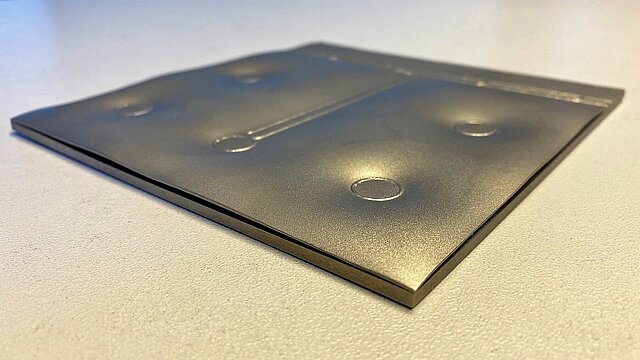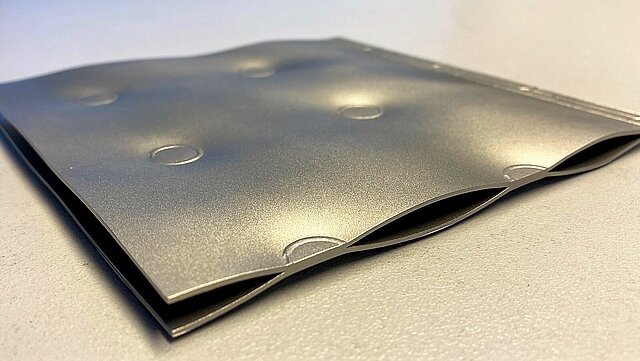Products
Pillow-plate heat exchangers are becoming an increasingly popular choice in the process industry due to their flexibility and efficiency. These plate-type heat exchangers feature a pillow-shaped surface created by an inflation process and are constructed entirely of welded pillow plates. Compared to more traditional shell and tube models, pillow plates are a relatively new technology that offer many distinct benefits. Aside from being used as heat exchangers, pillow plates also make excellent jackets for cooling or heating vessels with maximum precision. As this silver lining of pillow plates continues to be noticed, they will become even more widely implemented in the process industry.
Pillow plates are highly valued pieces of industrial machinery thanks to their unique manufacturing process. Depending on the size, pillow plates are made using an inflation process whereby two thin metal sheets are spot-welded together, with their sides and connecting ports being closed off with seam welding; a hydraulic fluid is then used to pressurize the gap between the two metal sheets, which gives pillow plates their unmistakable wavy surface. This complex procedure, along with pillow plates’ multi-faceted capabilities and dependability make them an integral part of many industry operations across the world.
Single embossed pillow plate (EP plate)
In the case of one-sided and single embossed profiled pillow plates, a thinner cover plate is welded to a thicker base plate. These EP sheets can be used to build walls or floors for containers whose contents have to be heated or cooled. The thicker base plate of the cushion plate directly forms the container wall.
Single-sided profiled pillow plates can also be used for temperature control, heating or cooling of solid materials, for example foodstuffs or bulk materials, in direct contact.

Double embossed pillow plate profiled on both sides (DP plate)
In the case of pillow plates profiled on both sides, two sheets of the same thickness are welded together. Such DP plates can be used in many process technology applications. For cooling or heating baths, individual DP plates or heat exchange systems made up of DP plates can be easily suspended directly in the bath tanks without any complex assembly.
In fluidized bed reactors or dryers, the low tendency for buildup and the ease of cleaning prove to be advantageous. The two-dimensional expansion of DP sheets is favorable when used as protection against thermal radiation or as flow breakers in stirred tanks. In bread production in thermo-oil-heated industrial ovens, thermal radiation from a flat heating element ensures uniform baking results.
